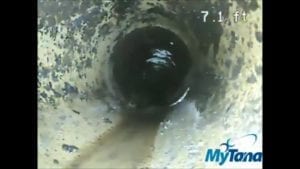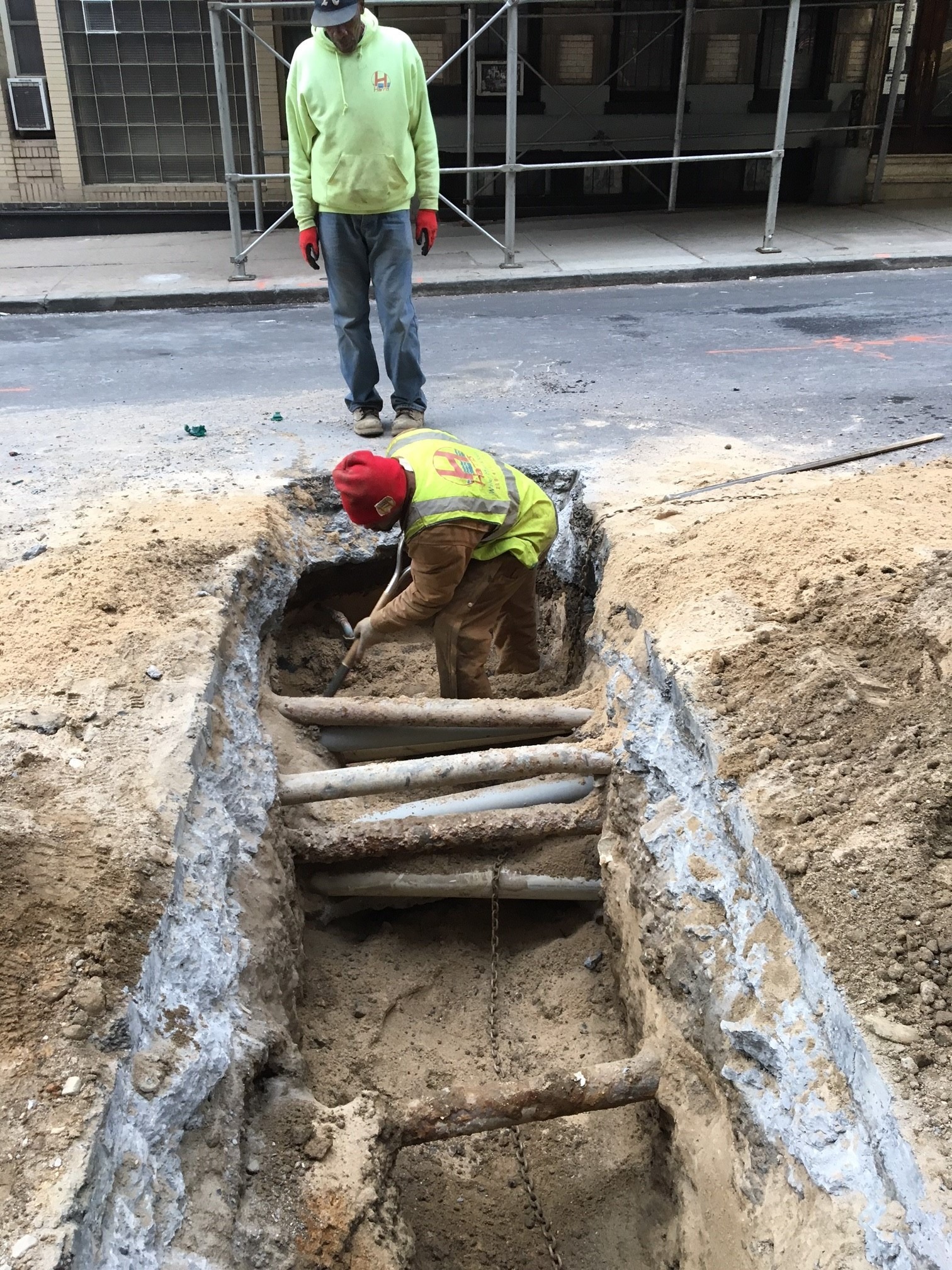If you have experienced a sewer backup it is important to contact your plumber even if it is only as a form of notification. If the backup has subsided and is no longer causing any issue in your home please do not ignore the facts and assume all is OK with your sewer line. At a minimum your plumber should be aware that he may be required to make a site visit in the near future and set a tentative schedule.
It is important to understand that backups are not normal and your sewer line should not be experiencing any backups. Many people are accustomed to living with sewer backups, are under the impression that sewer lines are supposed to backup and its something that “just happens”. This is not the case, if your sewer line is backing up it is due to some form of an issue inside of your pipe and you should take the time to understand why.
Immediate action
If the sewage is actively backing up it is suggested close the main water valve inside the home. This way the other people in the house cannot use the water which would potentially make things worse.
If the odor is traveling throughout the house it is suggested to open as many windows and doors to avoid any hazardous conditions.
If you are unsure about the severity and/or have any children in the house it is suggested to evacuate until the issue is resolved or made better. It is also a good idea to add bleach to any sewage that is sitting. This will not alleviate the actual problem but will assist in mitigating any health risk.
What to do when the plumber arrives?
First the plumber should utilize a sewer snake and try to clear the sewer line. Hopefully your issue is only a blockage from toilet paper or sanitary napkins and simply needs to be cleared out with force.
Pending the plumber’s experience he should be able to provide feedback based on what he felt when pushing the sewer snake inside the pipe. If the snake went straight through with no major obstructions you are safe. The blockage is cleared and you are free to use the sewer as usual.
If the plumber was not able to clear the sewer with his snake he will most likely attempt to clear the line with a smaller blade on the end of the snake or utilize a water jet to clear the line with pressure. At this point we hope that the sewer line is cleared or you may have a larger problem on your hands.
The next step would be to utilize a special video camera that is used to inspect the inside of sewer pipes. Even if you have successfully cleared the pipe at this point, it is always suggested to use a sewer camera and obtain as much information on the condition of your pipe.

Inside of a clear sewer line |

Inside of a cracked sewer line |
Hopefully the camera shows the pipe is clean and clear leaving you with a piece of mind. The downside may be that you are now aware of problems within your sewer line, how severe they are and how much time you may have before another sewer backup occurs. In most cases people like to get ahead of these issues and avoid any major problems. It is important to note that sewer repairs can be expensive and this may be a good time to prepare for a future repair if needed.
What to do if the sewer line cannot be cleared?
At this stage you would hire a licensed sub surface water main and sewer contractor to perform the pipe repair. You should provide the licensed plumber with as much detail as possible:
- When was the most recent backup
- When was the sewer line most recently snaked
- Is the sewage sitting still in the pipe or draining slow
- What caused the backup
- Are you currently using the water in your house
- Where was the exact problem EXAMPLE: Is it 20′ from the house trap which puts you under the roadway or was it 8′ out which would put you under the front lawn?
Now that the LMP (Licensed Master Plumber) has a detailed understanding of the exact issue he/she should provide you with options specific to your scenario. The two common options are to repair a section of the pipe or to replace the entire sewer line. It is important to ask what kind of risk is associated with each option, the cost for all options and how much more expensive if you replace the sewer line in sections over time. In most cases it is much more expensive to repair a section of the sewer line over time than to replace the entire pipe at once from the start.
What causes a sewer backup?
Roots- This is probably the most common yet most misunderstood by the general public. It is first most important to understand if roots have protruded through your sewer line they are not going away. Just because you completed a water jet or had a snake cut out the roots it doesn’t mean they are not growing back in the pipe, the cracks and crevices still remain in the pipe as well as the surrounding roots.
The roots will now grow thicker and faster than before as they are most attracted to the minerals that are commonly found in sewage water. The minerals will act like a magnet and attract the roots quicker than ever. If this is your scenario it is suggested to get on a maintenance plan or get ahead of the problem and replace the complete sewer line.
Wear and tear- There is no real scientific explanation other than pipes breakdown over time and begin to fail. This could be due to the surrounding ground settling forcing the pipes to shift or the actual material makeup decomposing.
Back pitched or belly – This may be a byproduct of a faulty installation of the surrounding ground settling over time. You may also have an issue with the elevations of the house sewer line in accordance with the city sewer line. For Example if the city sewer line is 8′ deep and your house sewer line is 8′ deep the piping installation is not able to work on gravity as it is intended to. A resolution would be to raise the sewer line from the street which will most likely require the internal piping to be raised as well. The other potential downside would be if you required a sewer injector to now pump the sewage up before it exits the house. This process does work however, you are now more susceptible to a backup or failure due to relying on the mechanical device instead of working on gravity.
Damaged by other- This is more common than most understand as there are many utility contractors working in the streets and sidewalks on a daily basis. The challenge is that all of the utilities cross each other and in many cases you are required to dig right beside another utility.
Another contractor hitting your sewer line may not necessarily fall under negligence and should be understood that these things tend to happen. In a case like this it is important to document as much information as possible and contact the utility contractor as quick as possible to start the claim.
Sewer pipe lining- First and foremost this is completely illegal in most areas and it is expected to fail. Installing a sewer liner is a temporary solution which is proven to fail over time. The liner is a coating that is inserted through the inside of the sewer pipe. The liner will not stop roots from growing through the pipe and if not installed well it will actually end up causing more backups than you had in the first place.
Sewer back ups and sewer repairs can be confusing for the average homeowner. It is very important to take the time and understand the details of your sewer problem, as well as all of the options for repair. Even if you are in an extreme circumstance please take the time to do your homework, do not let anyone force you into a decision and make sure you are working with a plumber you feel comfortable with.





















